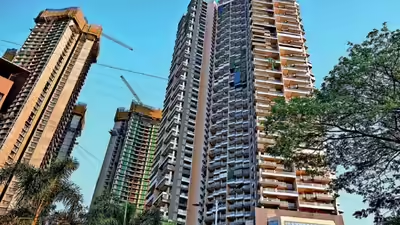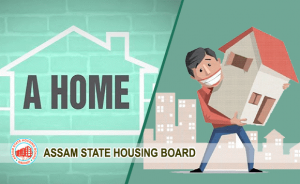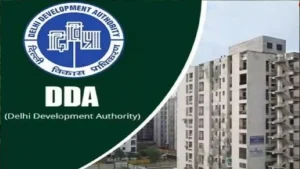India’s urban population is rapidly growing. With cities expanding and land availability shrinking, the pressure on housing infrastructure has never been greater. A large portion of this demand comes from the economically weaker sections (EWS), who often find themselves priced out of the formal housing market. As per recent estimates, the housing shortage for EWS and Low-Income Groups (LIG) in urban India remains alarmingly high.
To address this gap, the government has adopted an innovative approach—Vertical Housing for EWS under the Public-Private Partnership (PPP) model. This hybrid solution combines the efficiency of private sector execution with the social objectives of government initiatives, creating a powerful pathway toward affordable housing in India.
Also Read:- Kerala State Housing Board 2025: Loan Scheme | Contact Number
What is Vertical Housing for EWS?
Vertical housing refers to high-rise or multi-storey residential buildings that house multiple families or individuals across vertical space instead of horizontal plots. In the context of EWS, this housing typology is designed with compact, functional layouts that can accommodate low-income families within urban boundaries.
Vertical housing for EWS makes optimal use of scarce and costly urban land, allowing more units to be constructed on smaller plots. It’s an efficient solution that aligns with India’s growing urban density and infrastructural constraints.
How Does the PPP Model Work in Affordable Housing?

The PPP model for affordable housing involves collaboration between the government and private developers. In this structure, the government typically provides land, approvals, and certain financial incentives, while the private sector handles construction, delivery, and often post-possession services.
In some cases, the government also offers Viability Gap Funding (VGF) to make the projects financially feasible for developers. The Pradhan Mantri Awas Yojana PPP model has laid down specific frameworks for this collaboration, such as:
- DBFOT (Design, Build, Finance, Operate, and Transfer)
- Annuity-based Models
- Revenue-sharing Models
This synergy accelerates the execution of affordable housing projects under PPP, enhances accountability, and ensures that EWS housing is both livable and sustainable.
Also Read:- Punjab Affordable Housing Scheme 2025 – Housiey
What are the Benefits of Public-Private Partnership in EWS Housing Projects?

The benefits of Public-Private Partnership in EWS housing projects are substantial and multifaceted:
- Speedy Execution: Private players bring in modern technology and project management expertise.
- Cost Efficiency: Shared responsibilities lower financial risks and optimize resources.
- Quality Assurance: Market competition incentivizes better quality of construction and amenities.
- Social Impact: Addresses the housing needs of low-income groups and reduces urban slums.
- Scalability: The PPP model can be replicated in various cities with flexible configurations.
This model bridges the resource gap and empowers cities to achieve the goals of inclusive urban development.
What are the Key Features of Affordable Housing Projects under PPP?

Here are the key features of affordable housing projects under PPP specifically catering to the EWS segment:
- Compact yet efficient 1 BHK or studio units are designed for low maintenance
- Common facilities like community halls, lifts, water tanks, parking, and security
- Subsidized Pricing under government norms
- Transparent Allotment Systems through digital platforms
- Mandatory Maintenance Periods by the developer
- Access to Urban Infrastructure, including transportation, schools, and hospitals
These projects strive to balance affordability, dignity, and comfort.
Also Read:- DDA Housing Scheme 2025: Key Details | Registration Online | Price
What are the Government Housing Schemes for EWS in India?

Several government housing schemes for EWS in India support vertical housing under PPP, including:
- Pradhan Mantri Awas Yojana – Urban (PMAY-U)
-
- Credit-linked subsidy
- Beneficiary-led construction
- Affordable Housing in Partnership (AHP)
- Rajiv Awas Yojana (now subsumed under PMAY)
- State-led initiatives in Maharashtra, Gujarat, Tamil Nadu, and Delhi
These schemes enable land monetization, infrastructure funding, and direct financial assistance to EWS beneficiaries.
What is the Eligibility Criteria for EWS Housing Schemes?

To qualify for EWS housing schemes India, applicants must meet the following eligibility criteria:
- Annual household income not exceeding ₹3 lakhs
- Must not own a pucca house anywhere in India
- Possess valid Aadhar Card and income certificate
- Must be a resident of the area/state
- Must not have availed housing benefits under any prior scheme
Documentation and verifications are mandatory to ensure rightful access to benefits.
Also Read:- Karnataka Housing Board:- Upcoming Projects | Schemes | Registration 2025-26
What is the Process to Apply for EWS Housing under PPP Model?

The process to apply for EWS housing under the PPP model is typically as follows:
- Online Application via official government housing portals (PMAY, State Housing Boards)
- Document Submission, including identity, income, and residential proof
- Verification & Allotment through digital lottery systems
- Loan Processing for eligible applicants under credit-linked subsidy schemes
- Possession & Handover post-construction completion
Many states have mobile apps or centers to facilitate digital inclusion for low-income groups.
What are the Challenges in Implementing Vertical Housing for EWS?
Despite its promise, vertical housing for EWS comes with implementation challenges:
- High Construction Costs for high-rise buildings
- Limited Access to Finance for private developers in the early stages
- Post-possession Maintenance issues due to a lack of community awareness
- Resistance to Vertical Living among the traditional urban poor
- Poor Urban Planning leading to overburdened civic infrastructure
Unless addressed, these can derail the success of otherwise well-intentioned projects.
Also Read:- PM Surya Ghar Muft Bijli Yojana Scheme: Apply Online | Registration | Eligibility
What are Some Examples of Successful PPP Housing Projects for EWS?
Some noteworthy examples of successful PPP housing projects for EWS include:
- Ahmedabad Slum Rehabilitation under PPP
- Mumbai’s Redevelopment of Dharavi via PPP
- Tamil Nadu Slum Clearance Board Projects with Private Developers
- Delhi Development Authority (DDA) PPP Housing Projects
These initiatives showcase that with the right policy framework and execution, the PPP model can transform lives.
Comparison: Vertical vs. Horizontal Housing for EWS – Which is Better?
| Parameter | Vertical Housing | Horizontal Housing |
| Land Usage | Efficient use of space | Requires more land |
| Cost of Infrastructure | Higher due to elevators, plumbing | Lower per unit |
| Maintenance | Complex & costlier | Simpler and cheaper |
| Community Dynamics | Less personalized | Better community bonding |
| Long-term Sustainability | Needs regular upkeep | Easier to maintain |
Conclusion: Vertical housing is more scalable and suited for urban centers, while horizontal models work better in semi-urban or rural setups.
What is the Future Prospects of PPP in Affordable Housing?
The future prospects of PPP in affordable housing are extremely promising:
- Smart Cities Mission integration
- Land pooling policies encourage private participation
- Use of technology like pre-fab and modular construction
- Green certification norms for sustainable housing
- Digital real estate platforms are improving transparency and speed
With increasing urbanization and digitization, urban housing PPP models will shape the next phase of inclusive development.
Conclusion
Vertical housing for EWS under the PPP model represents a turning point in India’s journey toward housing for all. It’s more than just real estate—it’s about dignity, security, and inclusion for millions of urban poor. With the right balance of policy support, private innovation, and community involvement, vertical EWS housing can reshape the skylines of Indian cities.
At Housiey, we’re committed to bringing you the latest insights into government housing policies, schemes, and real estate trends. For more detailed information on government-backed schemes, do check out our blog on “Kerala State Housing Board 2025: Loan Scheme | Contact Number.“
FAQs






